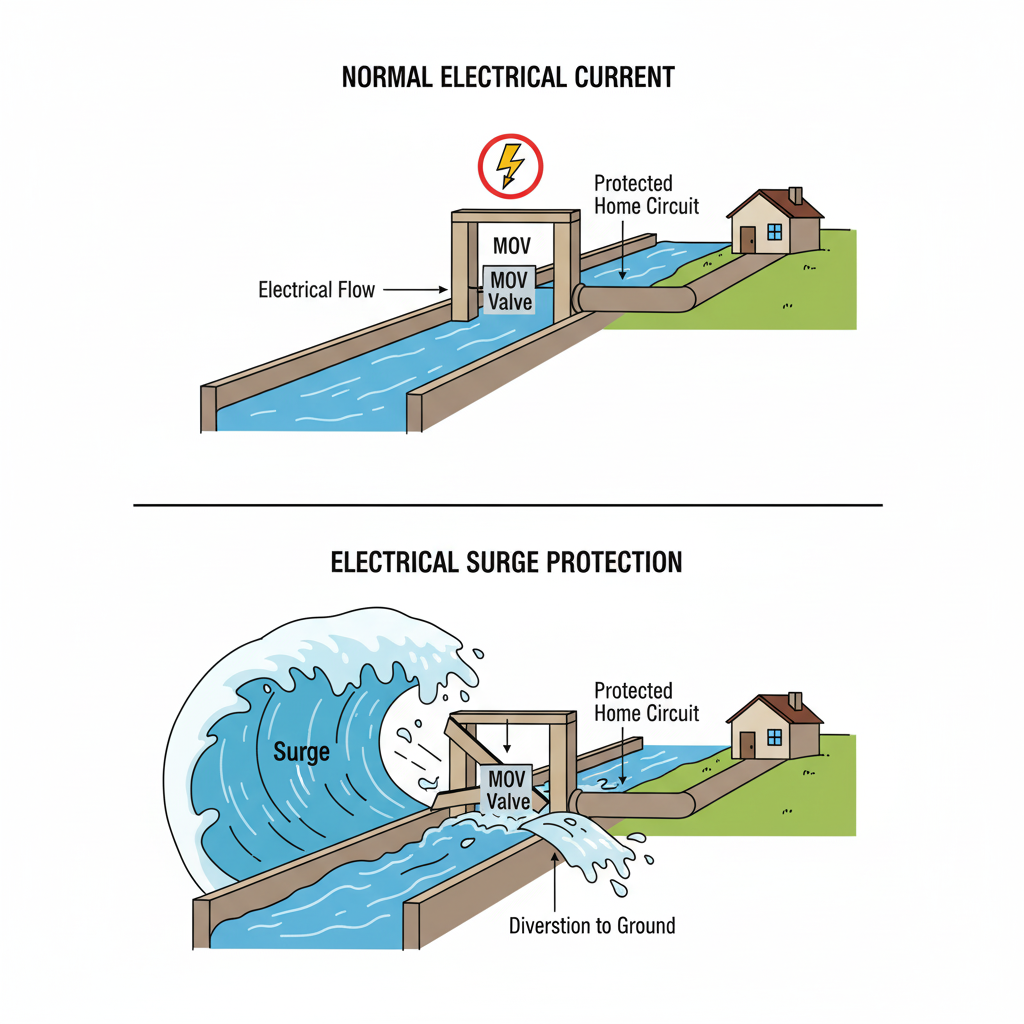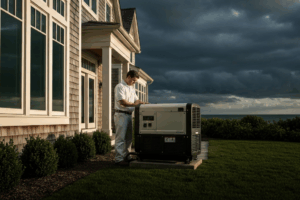What Is Surge Protection?
Introduction
A home’s electrical system is engineered to deliver a consistent and reliable flow of power, yet it remains vulnerable to sudden, momentary voltage spikes known as power surges. Surge protection is the electrical safeguard that defends a home’s sensitive electronics and appliances from these damaging events. This guide explains why surge protection is a fundamental requirement for every modern electrical system.
Protect Your Home with Surge Protection: Essential Tips for Electrical Safety
To safeguard your home’s electronics and appliances from damaging power surges, implementing surge protection is critical. By understanding the causes of surges and using whole-house surge protectors or power strips, homeowners can ensure electrical safety, extend device lifespan, and avoid costly repairs. Follow these expert tips to protect your home effectively.
What Exactly Is a Power Surge?
A power surge is a quick, unexpected spike in electricity that travels through a home’s wiring.
Most people think of lightning when they hear “power surge,” but while a direct lightning strike is the most destructive, it’s also the rarest. The majority of surges happen inside the home itself. They are caused by everyday events, such as when large appliances like your air conditioner or refrigerator turn on and off. These small events cause tiny electrical spikes that, over time, can silently damage the sensitive computer parts inside your electronics, making them fail much sooner than they should.
The Hidden Dangers of Unprotected Electronics
Without proper surge protection, voltage spikes can instantly “fry” or slowly wear down the sensitive parts inside your electronics and appliances, leading to expensive and unexpected failures.
Today, nearly every device in your home has a delicate computer chip, from your dishwasher to your smart thermostat. These parts are not built to handle voltages higher than the standard 120 volts. When a strong surge hits, it can instantly burn out these chips. This can cause major damage to expensive items like your HVAC system or your new TV. The continuous barrage of smaller, daily surges can also cause a gradual decline in device performance and longevity.
How to Choose the Best Surge Protection for Your Home’s Electrical System
Selecting the right surge protection is key to safeguarding your home’s electronics and appliances. Whether choosing a whole-house surge protector for comprehensive coverage or a power strip for specific devices, understanding the differences ensures NEC-compliant electrical safety and peace of mind. Learn how to pick the best solution for your home’s needs.
Power Strips vs. Whole-House Protection: The Crucial Difference
While a surge protector power strip offers localized protection for the devices plugged into it, a whole-house surge protector is the only way to safeguard every device and system in your home.
The $20 power strip you buy at the hardware store provides a crucial, but limited, defense. These strips are designed to handle smaller, immediate surges and are meant to protect only the items directly plugged into them.
Whole-house surge protection, however, is installed directly into your electrical panel (service entrance) by a professional.

| Type of Protection | What It Protects |
|---|---|
| Power Strip | Only the devices plugged into it. |
| Whole-House | Everything plugged into any outlet, plus major appliances and wired systems like your AC. |
Whole-house protection stops the surge at the source before it can even enter your home’s main wiring. The National Electrical Code (NEC) requires surge-protective devices for certain service upgrades or replacements, such as emergency system panels, per NEC 230.67, making them a key component in modern electrical safety standards.
How Does a Surge Protector Actually Work?

A surge protective device (SPD) acts like an electrical “safety valve,” sending any extra, dangerous voltage away to the ground.
At the heart of most surge protectors are small parts called Metal Oxide Varistors (MOVs). These act like electrical traffic cops.
- Normal Power: When electricity flows normally, the MOV blocks the path, allowing power to go straight to your devices.
- Surge Detected: When there’s a sudden surge, the MOV instantly opens its path.
- Protection: The MOV immediately sends the dangerous extra electricity away from your electronics and into the ground. This keeps the voltage at a safe level, protecting all your appliances. This process ensures that both minor and major surges are diverted, preserving the integrity of your home’s electrical devices and systems.
The Final Word on Electrical Safety
The most advanced technology in the world is useless if not installed correctly. Please take these essential safety precautions seriously:
- Always hire a licensed electrician for installation. Surge protectors are installed directly in your electrical panel and require professional expertise. Attempting this work yourself can result in severe injury or property damage.
- Verify the circuit is de-energized. As a basic safety measure, I always use a reliable voltage tester on every circuit before I begin work. Never assume the power is off.
- Never attempt to repair a damaged unit yourself. If a surge protector has taken a hit (especially from a major event like lightning), it has done its job. It needs to be replaced by a professional to ensure your home remains protected.
Conclusion
Surge protection isn’t an optional accessory; it’s a critical, long-term investment in your home and your peace of mind. By installing whole-house protection, you’re not just protecting your TV—you’re safeguarding your HVAC system, your appliances, and all the smart technology that makes your life easier. If you’re unsure if your home is adequately protected or would like a professional inspection, don’t hesitate to reach out to a qualified electrician. Protecting your investment is always our top priority.
Take the next step in your professional growth! Visit Expert CE (https://expertce.com/) for all your continuing education needs.
Continuing Education by State
Select your state to view board-approved continuing education courses and requirements:
Disclaimer: The information provided in this educational content has been prepared with care to reflect current regulatory requirements for continuing education. However, licensing rules and regulations can vary by state and are subject to change. While we strive for accuracy, ExpertCE cannot guarantee that all details are complete or up to date at the time of reading. For the most current and authoritative information, always refer directly to your state’s official licensing board or regulatory agency.



